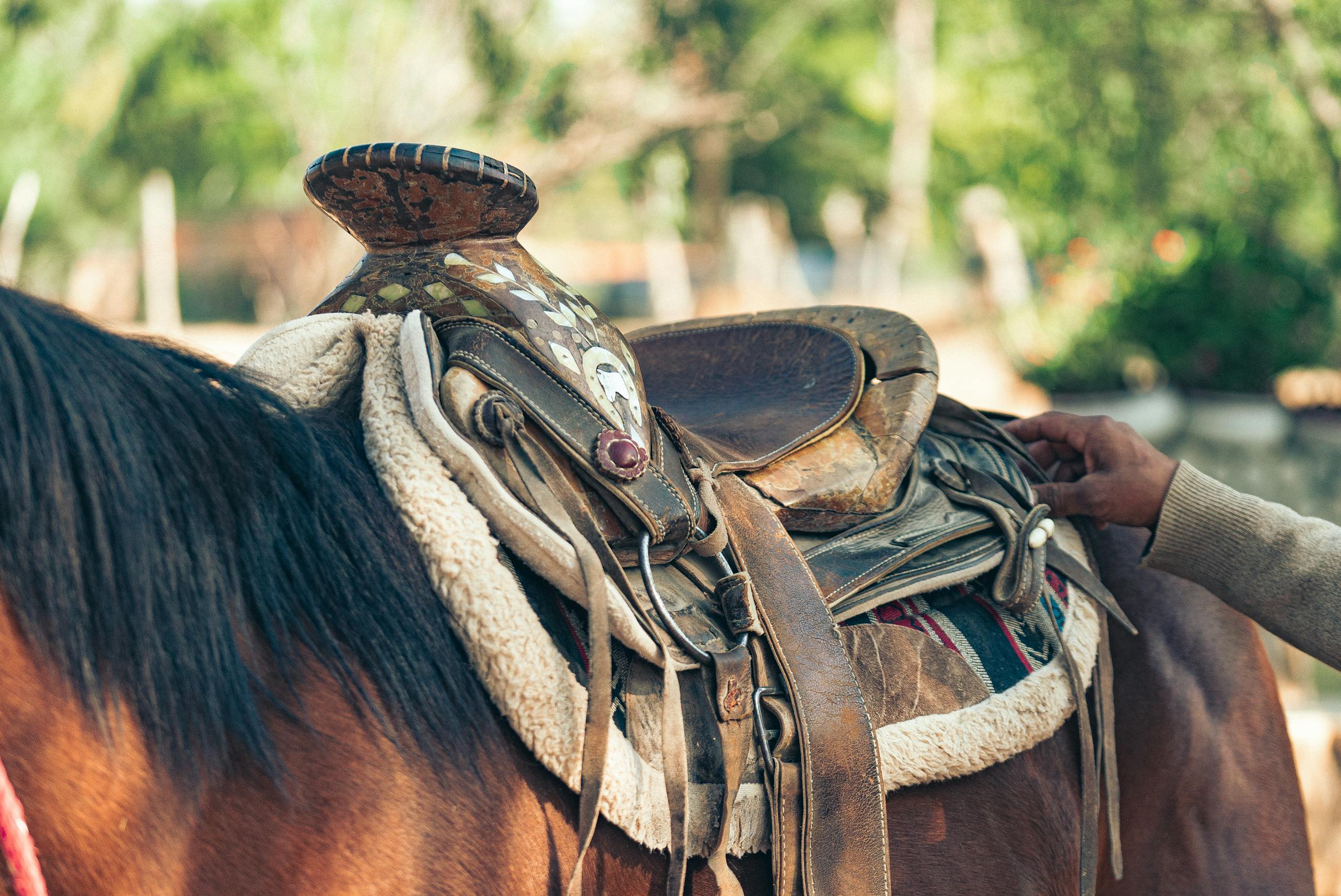
A powerful way both players and GMs engage with TTRPGs is by emulating the tones, themes, and ideas of the stories and media they enjoy. Though games such as the Tales of the Valiant roleplaying game or D&D typically live in the genre of high fantasy, this is not hard-coded into the game.
Belly up to the bar and read all the Ye Olde West articles in the archive!
Now that we have a stronger understanding of the foundations of the Wild West genre, let’s look at implement them in adventure design.
In roleplaying games, adventure design is often segmented into three encounter types: combat, social, and exploration. When attempting to craft an adventure that fits a specific genre, try taking elements of that genre and spotlighting them in these encounters.
Here are some examples of each encounter type and ways to implement some elements we discussed in the previous article.
Combat Encounters
Westerns lend themselves to violent settings rooted in personal conflicts. As such, look to ground your conflicts as much as possible, making them physical and “mundane.”
Mundane in this case doesn’t mean avoiding fantastical elements like magic and monsters. Those are a big part of the fantasy experience. Rather, it means presenting those elements as normal and expected.
Describing something like spellcasting in concrete, unspectacular way can do a lot of work to ground a combat in the western genre. For example, instead of an enemy conjuring a fireball with intricate spellcraft and magic circles, perhaps they simply grab a fistful of flames and lob them in a graceless but devastating arc.
In terms of mechanical elements, you can make a combat encounter feel more physical and dangerous in two main ways.
1. Close the distance. By constricting the area of combat, PCs and enemies have to get in close. This has a twofold effect. First, it makes the combat feel more dangerous since there are fewer ways to keep your distance from enemies and hazards. Second, it makes positioning on the battlefield a bigger tactical decision since every space is potentially in range of something.
2. Provide cover. Offering a variety of objects and items for players to take cover behind and interact with gives them tools they need to make those tactical decisions. In addition, fighting around cover (for both PCs and monsters) can help to really evoke the feel of a gunslinging showdown as combatants scatter to find advantageous positions while taking shots across the town square.
Social Encounters
Strong personalities are a driving force of a good western, so strive to put emphasis on NPCs and their relationships with one another. These characters need strong desires so that those desires can clash in interesting ways.
Now, designing full motivations and histories for dozens of NPCs (some of which the PCs may not even interact with) can be a ton of work. There are ways to simplify it. A good method for designing deep NPCs in bulk is to decide just two things for them ahead of time. Then let the rest develop over the course of the game.
1. One Word. First is a one-word description of their temperament. Are they aggressive? Passive? Curious? Annoying? Here’s a list of 50 choices to get you started, but the whole list is probably as long as you can imagine.
active
adventurous
affable
analytical
argumentative
assertive
cheerful
childish
collaborative
considerate
convivial
cynical
diplomatic
disruptive
eager
empathetic
encouraging
enthusiastic
extroverted
focused
gregarious
hopeful
hostile
inconsiderate
introverted
laid-back
lazy
mature
moody
motivated
nervous
optimistic
passive
patronizing
pessimistic
practical
precise
reflective
resentful
resourceful
selfish
sensible
shy
sincere
steadfast
strict
supportive
trustworthy
unreliable
weak-minded
Regardless of your choice, simplifying an NPC’s personality to one word gives you a quick reference to understand how they react to different situations and people.
2. Know the code. The second decision is more specific to the western genre. Great western characters always have a code that they follow. A character’s code is their motivation, but a little more, too. It can be summed up as what they have an unshakeable belief in or where their line in the sand is. A great code is something that both powers an NPC and can be used against them.
A full list of codes is probably much shorter than a list of temperaments, but there are still plenty of choices:
Family is everything
Protect the innocent
Maintain your honor
Grab power
Work for justice
Make money
Become the best
Live life to the fullest
If you’re stumped here, look at the adventuring motivations for various backgrounds in the Player’s Guide to help create a code for an NPC.
While a one-word temperament tells you how an NPC might react to a situation, a code helps you make quick decisions about how they act on their own. When something’s pressing on an NPC, their temperament determines how they respond. When it’s time for them to do something, their code helps you determine what that is.
A great trick is to reverse an NPC’s temperament when their code is tested. An NPC who is normally selfish might become generous in the face of injustice. It’s not deep, but it looks deep to players when it happens at the table!
Making these two decisions helps you to create a collection of NPCs with strong personalities in a relatively short time.
Exploration Encounters
The frontier is a wild place, hence the name, “Wild West.” This doesn’t just mean wilderness. Frontier towns had their fair share of uniqueness due to the meeting of many different cultures in small places. It might be easy to think about a western setting as two different zones: the town and the wilderness.
In towns, there are certain points of interest that are staples of the western genre. Chief among them is the fabled saloon. Batwing doors, creaky floorboard that announces your presence, a bouncing piano riff, and drinks galore. If the players don’t go to where an NPC you’d like for them to meet normally resides, you can use the saloon as your plan B to introduce them.
NPCs here are in a sort of common area, since most everyone in town visits the saloon. This also gives you an opportunity to have NPCs interact with one another, showing off those strong temperaments and codes.
Other important locations to include are a bank (for bandits to rob), an entertainment parlor (featuring some sort of live performance), and the sheriff’s office (including jail cells for those bandits). Consider giving NPCs in town a place that PCs visit regularly to help them cross paths in a natural and more consistent way.
In the wilderness, the players typically only have each other for conversation, so you can’t rely on NPCs to fill the gaps. Instead, treat the wilderness like a character. Give it a temperament just like you would an NPC. Only the wilderness temperament changes based on what the players are looking to do.
The wilderness can be inviting, curious, deceitful, violent, and anything in between. Use these traits to determine what landmarks or hazards the players come across, such as a watering hole for a wilderness that is helpful, or a massive gorge for one that isn’t. Alternatively, you can draw inspiration from in-game conditions, giving players challenges that revolve around resisting or preventing them. A sandstorm might whip up, imposing the blinded and deafened conditions, while blistering heat inflicts levels of exhaustion. (The Game Master’s Guide has a lot of handy info about applying hazards and weather conditions to gameplay!)
Read more at this site
